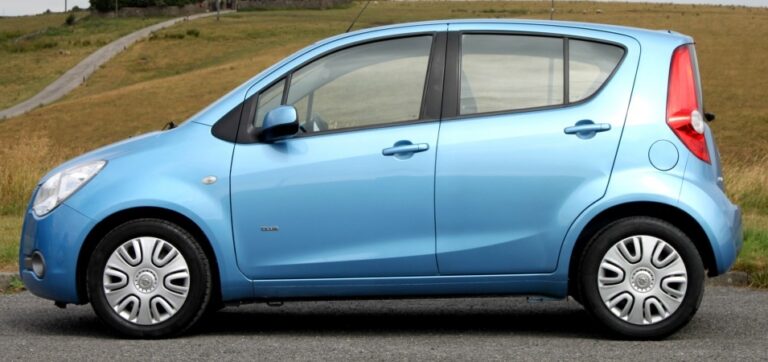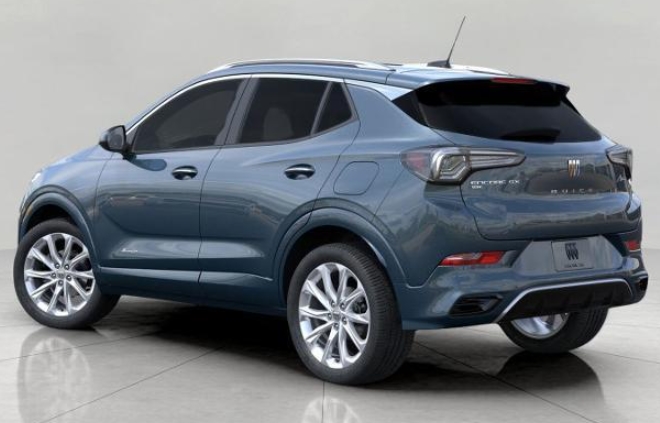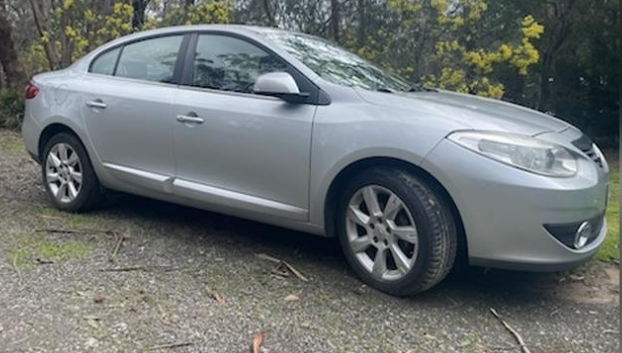The Opel Mokka: A Decade of Compact SUV Evolution
The Opel Mokka, a name that evokes images of comfort, adventure, and urban agility, has carved a significant niche in the compact SUV market. This article will trace the evolution of the Opel Mokka, detailing its production years, models, trim levels, and the technological advancements that have defined its journey. From its initial debut as a bold entrant to its current iteration as a modern, electrified powerhouse, the Mokka’s story is one of adaptation and innovation.
The Genesis: Mokka A (2012-2019)
The Mokka’s story begins in 2012, with the unveiling of the first-generation model, christened the Mokka A. Opel, under the General Motors umbrella at the time, aimed to capture the growing demand for compact SUVs. The Mokka A was not merely a response to market trends; it was a carefully crafted vehicle designed to appeal to a broad audience with its practicality, stylish design, and affordable price point.
- Production Years: 2012 – 2019
- Platform: Gamma II platform (shared with Chevrolet Trax and Buick Encore)
Exterior Design and Features:
The Mokka A boasted a robust yet compact design, immediately recognizable with its high ride height, sculpted body panels, and distinctive front fascia. The design language prioritized a confident stance and practical functionality, hinting at its versatility.
- Key Design Elements: The “Opel blade” side sculpting, chrome accents, and integrated roof rails contributed to its sporty aesthetic.
- Standard Features: Standard features included halogen headlights, daytime running lights, and steel wheels.
- Available Options: Higher trim levels offered alloy wheels, fog lights, and roof rails.
Interior and Technology:
The interior of the Mokka A was designed with practicality and user-friendliness in mind. While not lavish, it offered a comfortable and well-organized cabin with intuitive controls.
- Standard Features: Basic features included air conditioning, power windows, and a CD player with an auxiliary input.
- Available Options: Higher trim levels boasted features like a touchscreen infotainment system, satellite navigation, automatic climate control, leather upholstery, and heated seats.
- Safety Features: Safety was a priority. The Mokka A was equipped with standard features like electronic stability control (ESC), anti-lock brakes (ABS), and multiple airbags. Higher trims could include advanced safety systems such as lane departure warning, forward collision alert, and rear parking sensors.
Engine and Transmission Options:
The Mokka A offered a range of petrol and diesel engines to cater to different driving needs. The engine choices were economical and powerful.
- Petrol Engines:
- 1.6L naturally aspirated (115 PS) – Entry-level offering.
- 1.4L turbocharged (140 PS) – A popular choice for its blend of performance and efficiency.
- Diesel Engines:
- 1.6L CDTI (110 PS or 136 PS) – Known for their fuel efficiency and torque.
- Transmission Options:
- 5-speed manual (1.6L petrol)
- 6-speed manual (other engines)
- 6-speed automatic (available with some engines)
- Drivetrain: Front-wheel drive was standard, with all-wheel drive (AWD) available as an option, enhancing its capabilities in various road conditions.
Trim Levels:
The Mokka A was offered in several trim levels, each providing a specific combination of features and equipment. The trim levels varied slightly across different markets, but the following were common:
- Base/Entry-Level: Offered essential features, including the 1.6L petrol engine, basic infotainment, and standard safety equipment.
- Enjoy: Added features like alloy wheels, a better infotainment system, and some comfort enhancements.
- Edition: Offered additional comfort and technology features.
- Cosmo: The top-of-the-line trim level included premium features like leather upholstery, heated seats, and advanced driver-assistance systems.
- Special Editions: Throughout its production run, Opel introduced several special editions, often adding unique exterior styling elements, interior enhancements, and sometimes specific equipment packages. Examples include “Black Edition” and “Color Edition.”
.

.
Facelift (2016):
In 2016, the Mokka A received a significant facelift, known as the Mokka X. This update brought improvements to the exterior and interior design, as well as technological upgrades.
- Exterior Updates: A redesigned front fascia with Opel’s new “wing” grille, updated headlights, and a more modern overall appearance.
- Interior Updates: A redesigned dashboard, a new infotainment system with a larger touchscreen display, and improved materials.
- Technological Advancements: The introduction of Opel OnStar, providing features like emergency assistance, vehicle diagnostics, and remote control via a smartphone app.
The Second Generation: Mokka B (2020-Present)
The arrival of the second generation, the Mokka B, in 2020 marked a significant departure for the model. Under the new ownership of the PSA Group (later Stellantis), Opel embraced a fresh design philosophy, incorporating electrification and advanced technology.
- Production Years: 2020 – Present
- Platform: CMP (Common Modular Platform) – Also used by the Peugeot 2008 and Citroën C4.
Exterior Design and Features:
The Mokka B introduced Opel’s new design language, characterized by the “Vizor” front fascia – a single, sleek panel integrating the grille and headlights.
- Key Design Elements: The “Vizor” front end, sharp lines, and a more coupe-like roofline created a bold and modern aesthetic. The overall design was more sporty and dynamic compared to the Mokka A.
- Standard Features: LED headlights, LED daytime running lights, and alloy wheels were standard.
- Available Options: Higher trim levels included features like a black roof, matrix LED headlights, and distinctive alloy wheel designs.
Interior and Technology:
The interior of the Mokka B featured a complete overhaul, with a focus on digital displays and a driver-centric layout.
- Standard Features: A digital instrument cluster, a touchscreen infotainment system with smartphone integration (Apple CarPlay and Android Auto), and modern safety systems.
- Available Options: A larger touchscreen, a head-up display, premium upholstery, and advanced driver-assistance systems like adaptive cruise control and lane centering assist.
- Safety Features: The Mokka B boasts advanced safety features, including automatic emergency braking (AEB), lane keep assist, traffic sign recognition, and driver drowsiness detection.
Engine and Transmission Options:
The Mokka B embraced a range of efficient petrol and diesel engines, as well as a fully electric powertrain.
- Petrol Engines:
- 1.2L turbocharged (100 PS, 130 PS) – Offered improved performance and fuel efficiency compared to the Mokka A.
- Diesel Engines:
- 1.5L CDTI (110 PS) – Designed for fuel economy and low emissions.
- Electric Powertrain (Mokka-e):
- Electric motor (136 PS) – Powered by a 50 kWh battery pack, offering a respectable electric range.
- Transmission Options:
- 6-speed manual
- 8-speed automatic (available with some engines)
- Drivetrain: Front-wheel drive is standard. All-wheel drive is not available on the Mokka B.
Trim Levels:
The Mokka B has been offered in a range of well-equipped trim levels. The exact names and specifications may vary across different markets, but common trims include:
- Base/Entry-Level: Offered essential features, including the 1.2L petrol engine, a basic infotainment system, and standard safety equipment.
- Edition: Added features like larger alloy wheels, a more advanced infotainment system, and some comfort enhancements.
- Elegance: Offered additional comfort and technology features, including advanced driver-assistance systems.
- GS Line: A sportier trim level with unique exterior styling elements and interior enhancements.
- Ultimate: The top-of-the-line trim level includes premium features like leather upholstery, matrix LED headlights, and advanced driver-assistance systems.
The Mokka-e: The electric version of the Mokka, known as the Mokka-e, has its own trim levels reflecting its electric powertrain and unique features.
Conclusion:
The Opel Mokka has evolved significantly over the years, adapting to the changing demands of the market and embracing technological advancements. From its initial debut as a practical and affordable compact SUV to its current iteration as a stylish and technologically advanced vehicle, the Mokka has successfully carved a niche for itself. The transition to the CMP platform, the introduction of the Mokka-e, and the new design language demonstrate Opel’s commitment to innovation and a sustainable future. The Opel Mokka continues to be a relevant and appealing choice in the compact SUV segment, promising further evolution and advancements in the years to come.







